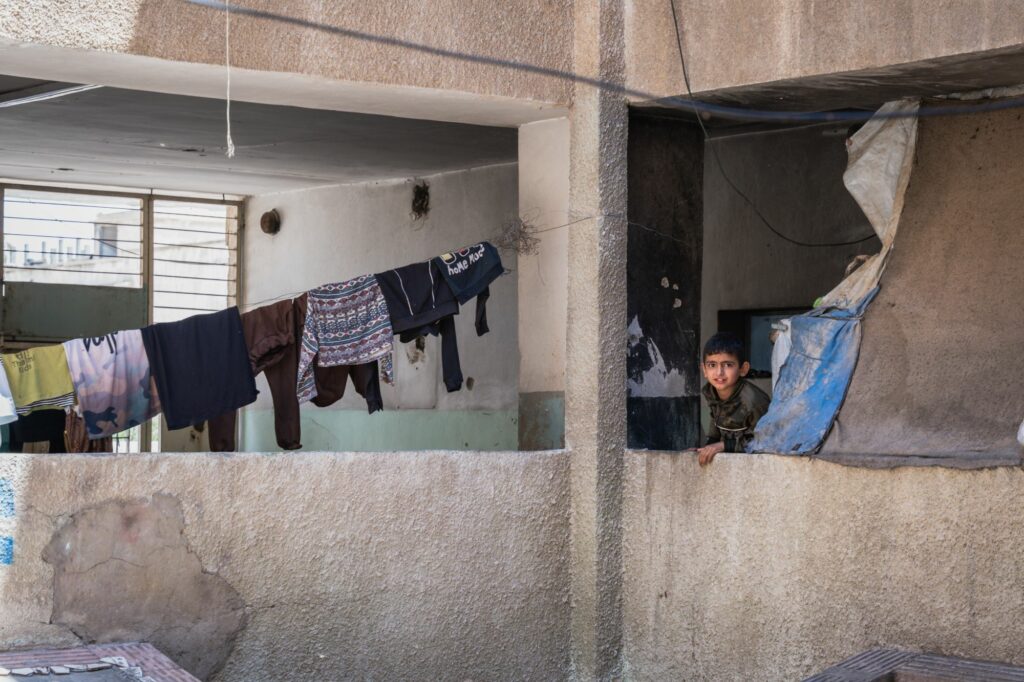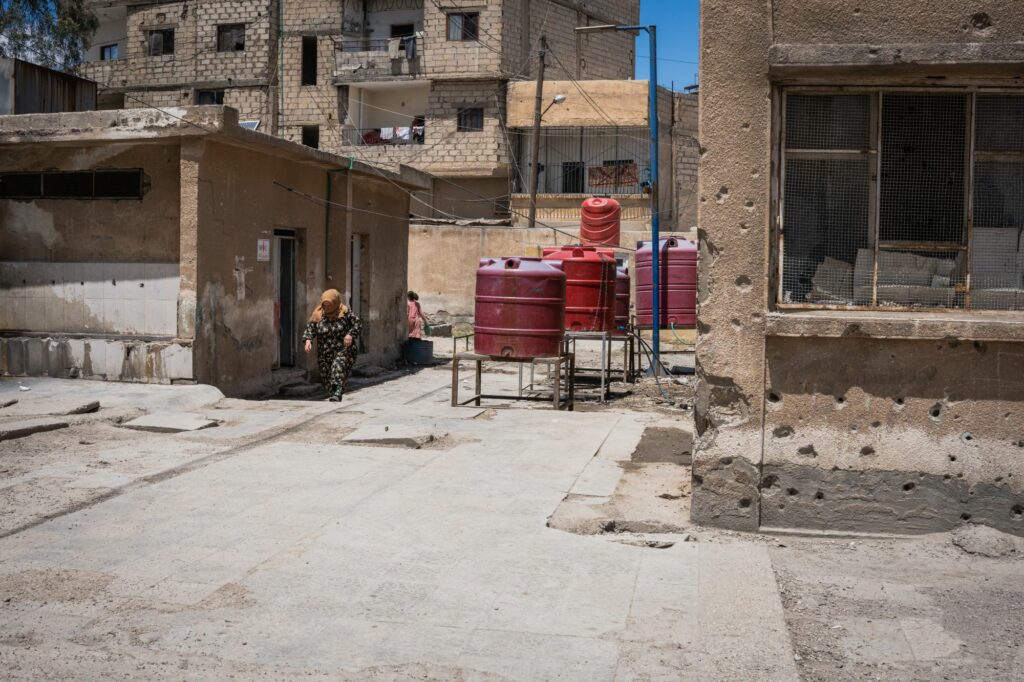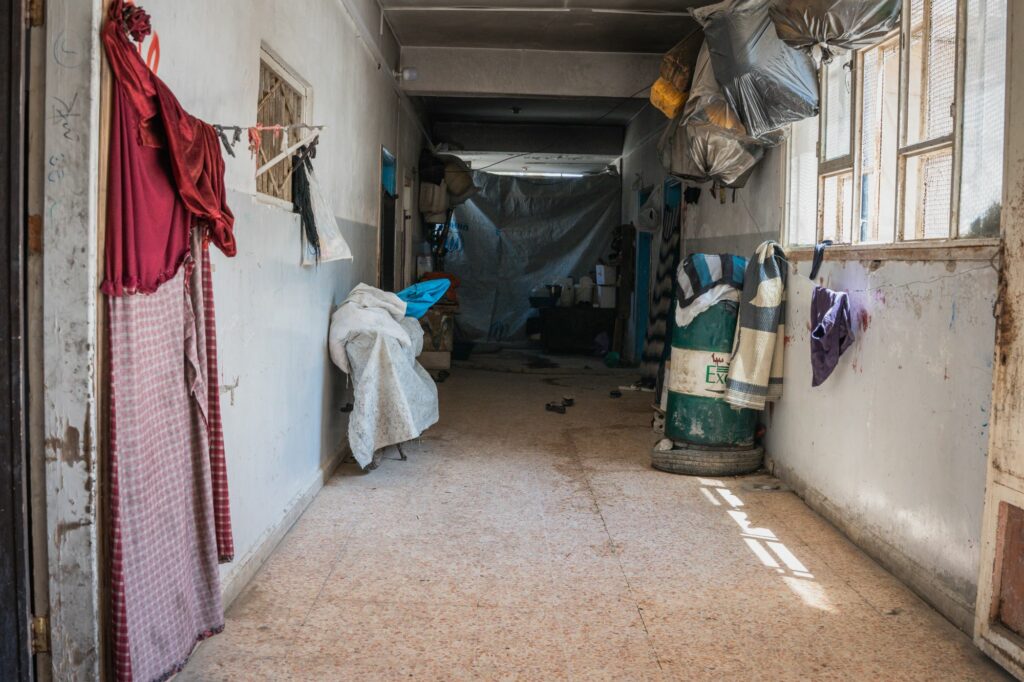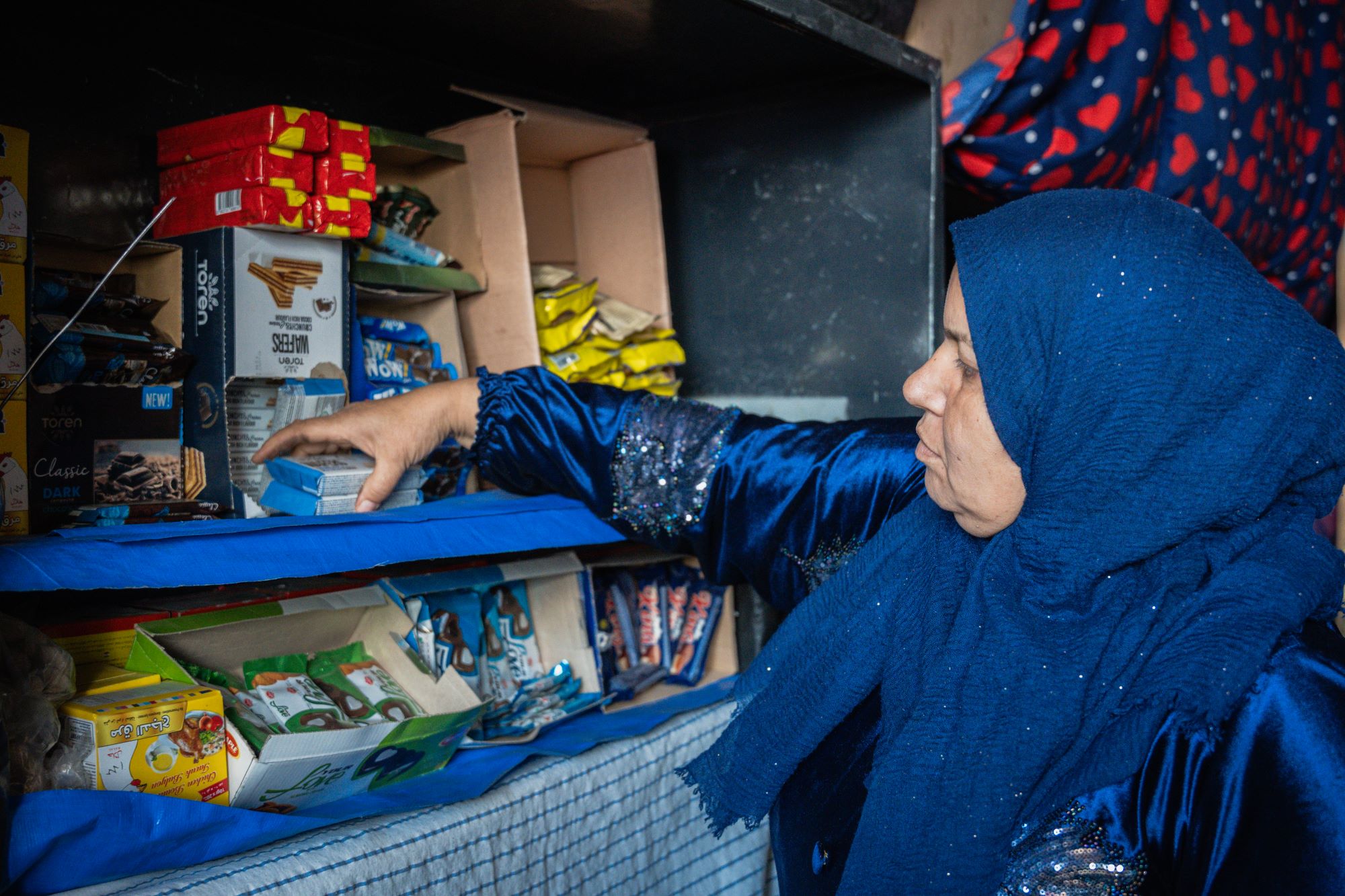The Syrian conflict, now in its thirteenth year, has caused a severe humanitarian crisis. It is the world’s largest in terms of displacement.[1] Millions have been forced to flee their homes, seeking safety in areas across the country and beyond its borders.
When people think of shelter for displaced communities, images of camps with rows of tents and support from local and international officials or NGOs, often come to mind. But displacement looks different everywhere. In Syria, approximately 15,500 people are living in collective centers, which are repurposed public buildings, like schools or community centers, that were not designed as long-term housing.
- The SAFER program supports families living in displacement in collective centers in northeast Syria.
- The SAFER program supports families living in displacement in collective centers in northeast Syria.
- The SAFER program supports families living in displacement in collective centers in northeast Syria.
- The SAFER program supports families living in displacement in collective centers in northeast Syria.
- The SAFER program supports families living in displacement in collective centers in northeast Syria.
Families seek refuge in these informal, urban settlements for many reasons. Some have been turned away from camps due to overcrowding. Others need to be closer to cities to access markets or their jobs, and camps are frequently further away from established towns. Many have been displaced multiple times and are now living in these buildings after having left a camp that was shut down.
There are 80 collective centers across northeast Syria where people are simply trying to find shelter and make do.[2] In one former school building, classrooms are now living quarters for families, with multiple generations living together in small spaces, sometimes without doors, windows, or the comforts of home. People in the school share access to latrines and a kitchen—none of which were designed for day-to-day residential use.
These facilities lack the structured management of camps, and the variation in the spaces themselves presents unique challenges for both residents and aid organizations.
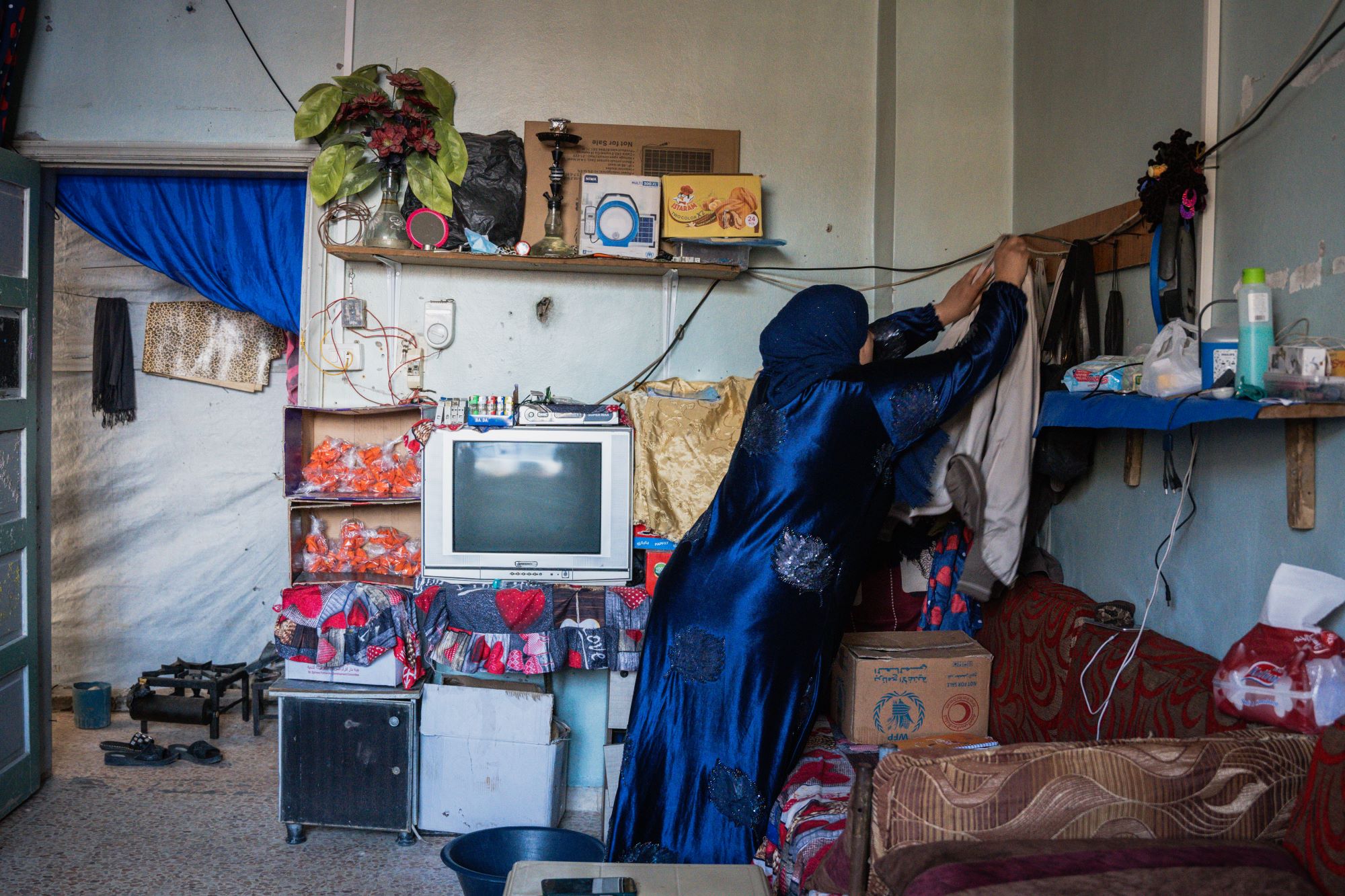
Fatima is originally from Homs, but moved into a collective center in northeast Syria after fleeing violence twice with her family.
Fatima, a mother of four, lives with her husband in a settlement in Al-Hasakeh. She is originally from Homs, but when war tore through their city, they fled to Ras al-Ain, hoping to rebuild their lives. To start a new life, her husband opened a falafel shop.
The conflict, like a relentless shadow, followed them to Ras al-Ain. Their home and family shop were reduced to rubble, forcing them to flee once more. This brought them to the informal settlement in Al-Hasakeh.
“When we first arrived, the situation was dire,” she said. Fatima and her family struggled to adapt to life in a repurposed building, not meant for long-term use. “What we built in Ras al-Ain is gone. We started with no money, no support; we were not even welcomed here,” she said. Despite the limited space assigned to her family, Fatima turned part of their living area into a small shop. She was determined to provide for her family’s needs despite all the difficulties.
The Shelter and Food Emergency Response (SAFER) program, funded by the USAID Bureau for Humanitarian Assistance, has taken a frontline role in supporting these settlements, recognizing their unique needs and challenges. While we maintain operations in formal displacement camps, our focus on collective centers has intensified, given their often-overlooked status in the broader humanitarian response. SAFER currently supports 49 locations across Al-Hasakeh and Ar-Raqqa governorates with a variety of services.
“After SAFER started working here, things have improved so much. They’ve provided us with bread, gas, hygiene kits, and even repaired our shelter. Without their support, we wouldn’t have received this crucial aid,” Fatima said.
At the heart of our intervention is food security. We supply high-quality, locally or regionally sourced flour to nearby bakeries, ensuring daily distribution of fresh bread to residents free of charge. This offers not just regular sustenance, but a small sense of stability in uncertain times.

SAFER created short-term employment opportunities to people living in collective centers to support renovations and maintenance.
Infrastructure maintenance is another critical component of our work. Unlike formal camps with established management structures, the buildings being used for collective centers require ongoing attention to remain habitable. Our teams work diligently to maintain and rehabilitate these repurposed buildings. This includes electricity, doors, windows, and water tanks, as well as drainage systems, communal areas, and lighting. We hire residents as daily laborers for these tasks, providing much-needed economic opportunities within the community.
Among the daily workers is Abdulaziz, who has experience in maintenance work, particularly sewage repairs. “My work has two advantages: I serve the place where my family and I live, and at the same time I benefit from it financially,” he said.
Recognizing the harsh realities of displacement, particularly during the winter, SAFER distributes essential household items. Heaters and diesel fuel are provided to help residents cope with challenging living conditions. In communal kitchens, we ensure a steady supply of cooking gas through regular cylinder refills.

More than 15,000 people live in collective centers in northeast Syria, living in repurposed buildings rather than displacement camps or informal settlements.
Water, Sanitation, and Hygiene (WASH) services are paramount in these crowded living spaces. We distribute essential hygiene supplies and menstrual management kits. Our teams also manage sewage and solid waste systems and conduct regular cleaning campaigns, crucial for preventing disease outbreaks and maintaining dignity in these temporary homes.
As the Syrian crisis persists, supporting the displaced communities living in collective centers remains critical. While these collective centers may not be long-term solutions, our support helps make them more livable.
[1] https://reporting.unhcr.org/operational/situations/syria-situation#:~:text=2023%20situation%20overview,close%20to%206%20million%20Syrians.
[2] Sites and Settlements Working Group (SSWG): https://sites.google.com/view/sswg-portal/out-of-camp_1/overview

